How confident are you in your brand’s SEO and content?
Technology pushes content marketing to change year after year. What was relevant for most of 2019 may only be a footnote in 2020.
Do you want your website to get buried under others that continue to keep up with new content and SEO trends?
Since never is probably your answer to that question, now is the perfect time to rethink and reevaluate the way you do content and SEO. Find out what will define your 2020 marketing strategy and learn what it takes to be ahead of the pack.
Read on to learn about the major content practices and SEO trends on the horizon.
1. Optimizing Content for Voice Search
Instead of typing keywords into a search box, it’s becoming more convenient to talk to your smart device.
When Google’s voice search feature launched in 2002, it started a whole new revolution. We feel the effects of this monumental shift in technology to this day.
The influence of voice search continues to grow. In 2017, 13% of households in the U.S. had smart speakers. According to data from OC&C Strategy Consultants, that percentage is expected to balloon to 55% by 2022.
More smart speakers in more homes naturally lead to more voice search usage. Having smart speakers also encourages people to use voice assistants on devices like smartphones. Here’s data to back this claim: Voicebot.ai states that 39.8% of smartphone voice assistant users also own smart speakers.
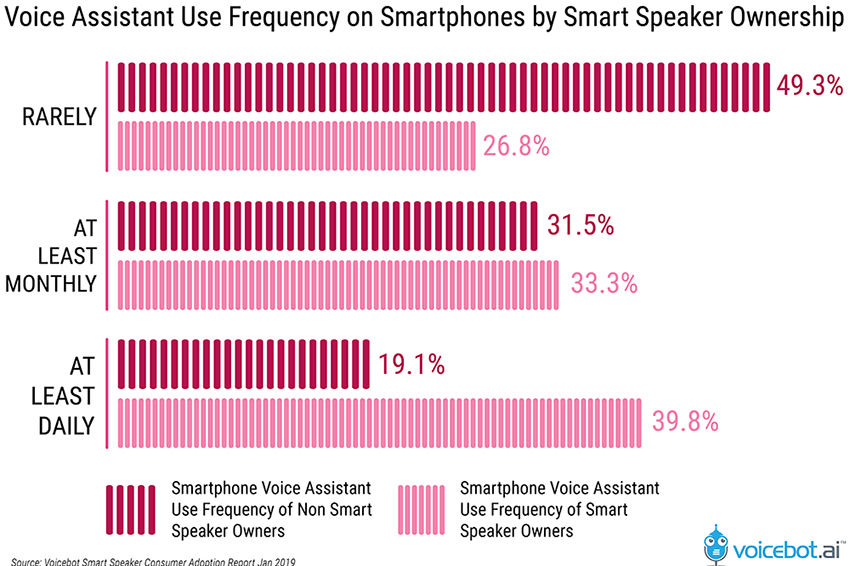
Juniper Research, a U.K.-based firm, predicts 8 billion voice assistants will be active around the world by 2023, tripling the 2018 statistic of 2.5 billion.
How does all of this translate to an SEO trend? Put simply, optimizing for voice search is a must for content marketers in 2020. Here are some actionable insights to consider:
- Optimize content to target SERP features. Findings from a SEMrush study show that 70% of answers returned from voice searching came from a SERP feature, with 60% occupying a Featured Snippet.
- Focus on phrase keywords using natural language. This includes question-and-answer and long-tail options. Don’t use keyword combinations that sound weird when spoken out loud.
- Keep it simple. The ideal Google voice search result should be completely understood by 9th graders, says Backlinko. Verbal responses need to be easily digestible and should not need repetition. Tailor your content to reflect this.
2. Using More Long-Tail Keywords in More Targeted Content
Brands with strategic blog content churn out 67% more leads than those that don’t publish content at all, according to Hubspot. During their respective buying journeys, 71% of B2B buyers will read blog content.
Is any blog content better than no blog content? Maybe so, but there’s no reason to settle for mediocrity. As you will soon find out, lackluster content won’t be able to compete with output from smart and savvy digital marketers in 2020.
Did you know that 70% of all online searches use long-tail keywords? With long-tail keywords in your blogging strategy, you’re already looking at less competition in your playing field.
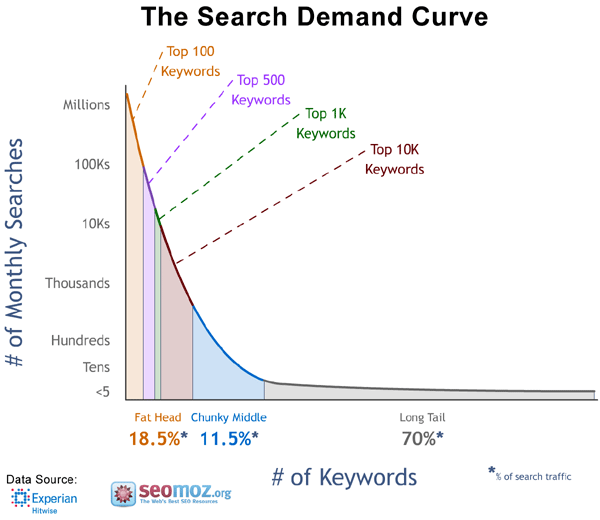
More importantly, focusing on long-tail keywords is compatible with optimizing for voice search. When you start with “Hey, Siri” or “OK, Google” the next words aren’t likely to be disjointed keywords. They’re going to be conversational phrases or questions.
In 2020, highlight long-tail keywords through intentional formatting. SEO trends may change, but some practices remain evergreen.
Careful and streamlined use of keywords tells Google that your content is important. Use the formatting tricks exemplified in this blog – bullet points, bold text, and short paragraphs – to your advantage.
Long-tail keywords speak to user intent and help reach people that are looking for content that’s relevant. When you provide great search results, you’re more likely to please conversion-ready leads.
3. Meeting Google’s E-A-T Standards with Exceptional Niche Content
We touched on strategic content through long-tail keyword use above. However, creating killer content is an evolving SEO trend in itself.
The latest evolution in content crafting due to Google’s “Medic” update, which implemented changes in the search engine’s core algorithms. What’s happened since then?
Content creators and marketers: These days, you are what you E-A-T. Google prioritizes content displaying Expertise, Authoritativeness, and Trustworthiness.
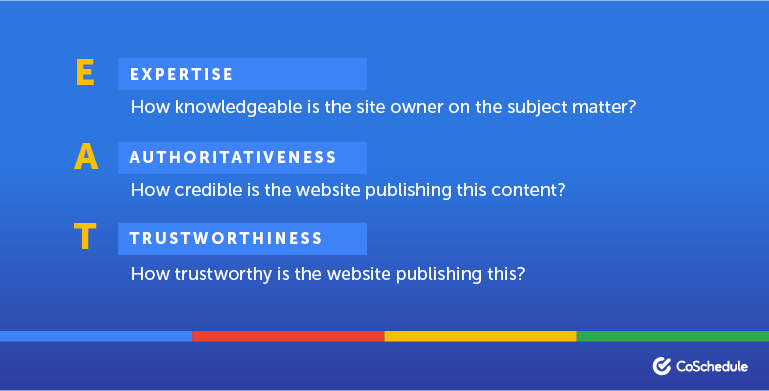
It is imperative to bake the E-A-T perspective into your content marketing. 97% of all online searches are done using a Google property, according to Jumpshot/Sparktoro.
These days, good content is not enough. What you create needs to be amazing and competitive.
Veteran digital marketers are used to adapting to technology and platform changes. The big fish are already deep in E-A-T territory and they are raising the bar each day. You will need to play work harder and smarter to stay in the game with major players.
How do you aim for top Google SERP rankings in 2020? Make sure you do the following:
- Prove and display your expertise. Google’s Search Quality Evaluator Guidelines state that E-A-T evaluation is for content as well as creators. Context and information about digital authors are now essential. You can show these in profiles and boxes following the main content of a page.
- Run a valuable, information-rich and Google-friendly site. In their Webmaster Guidelines, Google emphasizes the idea of creating original and user-centric pages. No tricks or deceptions to climb SERP ranks quickly. The algorithm rewards truly helpful, authoritative content.
- Publish high-quality content on a stable schedule. If you don’t stick to a routine to handle site content updates, you run the risk of lowering your search visibility. Without posting new articles or modifying older pages, your content quality may also suffer.
At Express Writers, we maintain top rankings in Google because we commit to creating quality content delivered on a consistent timetable.
For 8 solid years, we published one blog per week without fail. No excuses, no exceptions. Today Express Writers ranks in Google for more than 23,000 keywords. 99% of our prospective leads find us through organic search.
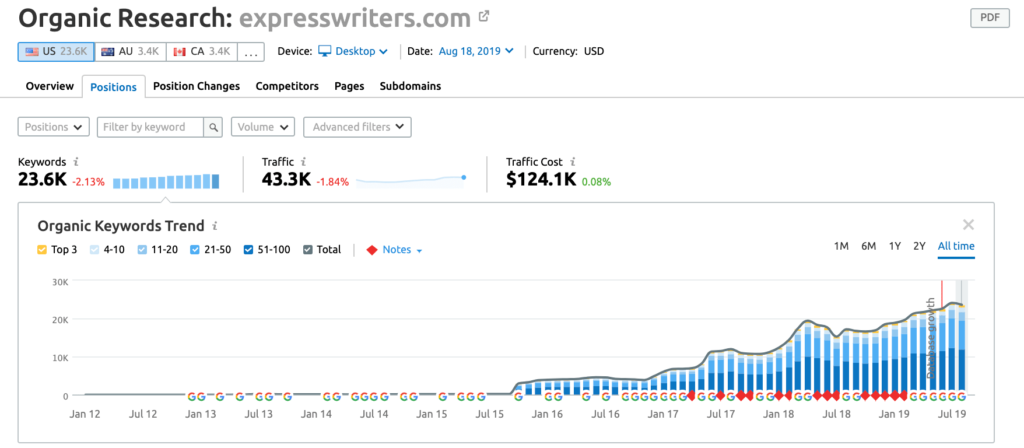
In 2020, content marketing – and by extension, great content – will continue to grow and change along with the times. The real strategy is to adapt and learn as fast as possible, even if the current lesson is that slow and steady wins the race.
More than a decade ago, information age entrepreneur Seth Godin famously said that “content marketing is the only marketing left.” The quote rings true to this day.
4. Shining a Spotlight on SEO-Ready Imagery for Rich Content
Another content trend to watch out for is SEO-readiness and relevance in non-text content.
Say goodbye to vague visuals and random stock photos. If images don’t add real value or more information to a page, they’re no longer useful and shouldn’t be there.
The opposite extreme is unusable, as well. Anything too flashy, too weighty or too distracting should be replaced with something sleeker and more elegant.
What does it take to be ready for the image SEO trend? Get started on publishing rich content by following the tips below:
- Create original imagery. Unique images like infographics and simple explainers often have a direct connection to your text content. If they’re done right, they’re likely to be shared more, even by themselves.
- Name and tag images using relevant focus keywords. Use logic and common sense when creating filenames and alt tags. Your image descriptions must relate to the text content the imagery is supporting, without including words that aren’t pertinent.
- Reduce file sizes so pages load faster. Bounce rates increase with slower page load times, according to Think with Google. Use an image compression tool or plugin to keep your site speedy and efficient.
- Work with an appropriate file format. Not everything needs to be a JPEG. Sometimes it’s better to use a PNG, GIF or another format to optimize quality, handle transparent elements, bring down file size, or add simple animations.
This all goes back to Google’s focal point in their Webmaster Guidelines: to create helpful and original content. In 2020, images on a page should engage users and facilitate a deeper understanding of the topic at hand.
5. Including Interactive Content
Talking about better imagery leads us to the final SEO trend to integrate into your digital strategy for 2020: interactive content.
According to Ion Interactive, 88% of marketers claim that interactive content is an effective way to differentiate their brands from competitors. On the other side, 91% of B2B buyers claim a preference for visual and interactive content over static counterparts.
What can be considered interactive content?
Anything that prompts a user to take action counts: assessments, games, quizzes, calculators, and contents are prime examples. It is also possible to create interactive versions of ebooks, infographics, lookbooks and white papers.
Interactive content doesn’t need to be complicated or complex. Here’s a simple but effective example: A PBS quiz that measures how many of the 100 most-loved books of America you’ve read.
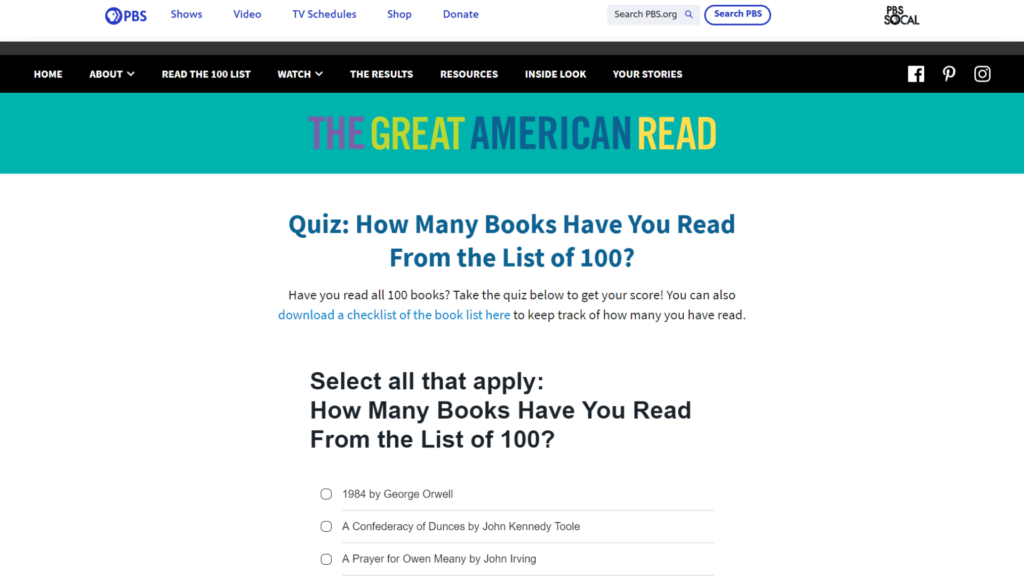
PBS provides great value to its readers in creating multiple ways to interact with essentially the same data. There is a link to the contents of the quiz in checklist form for people interested in improving their quiz scores by working their way to completing the book list.
Less conspicuous is the “Read the 100 List” link on the top menu. That leads you to a page where you can manipulate the 100 list – shown in a tiled format using the book covers – through filtering by genre or sorting alphabetically by title or author.
In contrast, check out this 2017 tax bill calculator from the New York Times. It works by having users input certain information – like gross income and household members – and animating the descriptive visual accordingly.
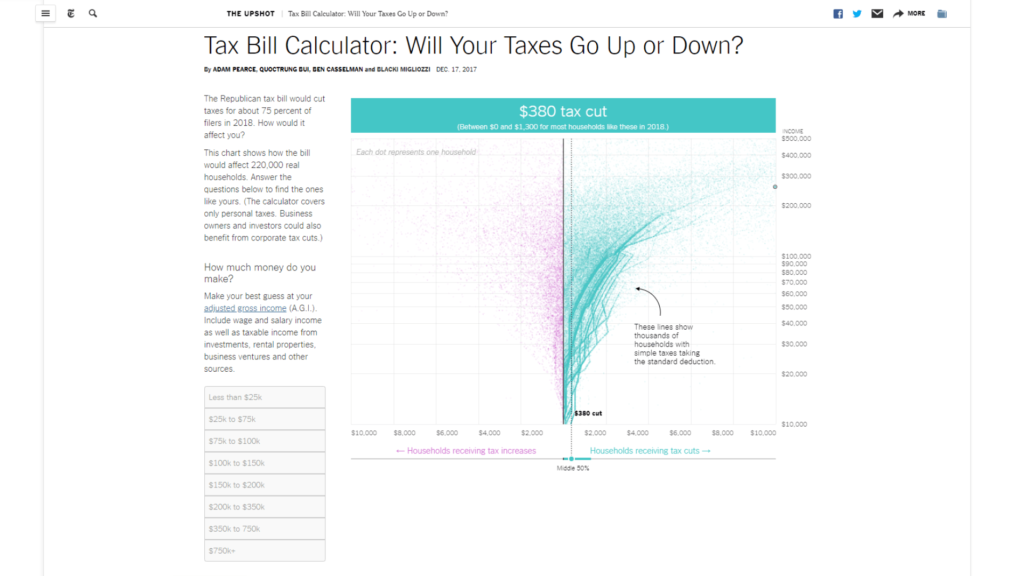
This interactive graphic example is colorful, easy to understand, and very timely when it was initially published.
The calculator augments an otherwise brief feature on the Republican Tax Bill passed in December 2017. It turned a short news piece into a way for people to connect with current events on a personal level.
In 2020, smart marketers will turn to fresher and more innovative ways to engage their audiences. The point here is not to make content futuristic, edgy or complex. Like all content, it should benefit the user.
Simple interactive content is often easier and more affordable to create than high-quality video or interactive video content. A step up from relevant imagery, interactive content is definitely an SEO trend to lean into moving forward.
Wrapping up: Focusing on User Benefit in All 5 Content and SEO Trends for 2020
Now for the bonus round: There’s a trend within all the upcoming trends discussed above. Did you notice it?
To recap, here are the five content and SEO trends that will shape your digital strategy in the year to come:
- Optimizing content for voice search,
- Using more long-tail keywords in more targeted content,
- Meeting Google’s E-A-T standards with exceptional niche content,
- Shining a spotlight on SEO-ready imagery for rich content, and
- Including interactive content.
Each one is a tactic that can be used to add value and relevance to your content and search results. The bottom line: They make it that much easier for you to create content that your users will love reading.
In 2020, you must think about how your carefully cultivated expertise can benefit users. Your brand and your SERP performance should be a distant second and third on your priority list.
This is a golden age for content! The best approach for 2020 and beyond is to revel in sharing the knowledge that you have. What makes your content valuable is not how it performs. Rather, the value is in how it helps the audience that you’re creating it for.
Approaching content marketing in this way can yield incredible results for small and large enterprises alike.
So, with 2020 just around the bend, it’s time to strategize and craft content in the old and reliable way – not for search engines, but actual people.
About the Author:
Julia McCoy is an entrepreneur, author, and content marketing educator.
She leads operations at her content agency, Express Writers, and recently launched her personal brand, Content Hacker.
Find her on Twitter.
from Quick Sprout https://ift.tt/2RjXiHE
via IFTTT

